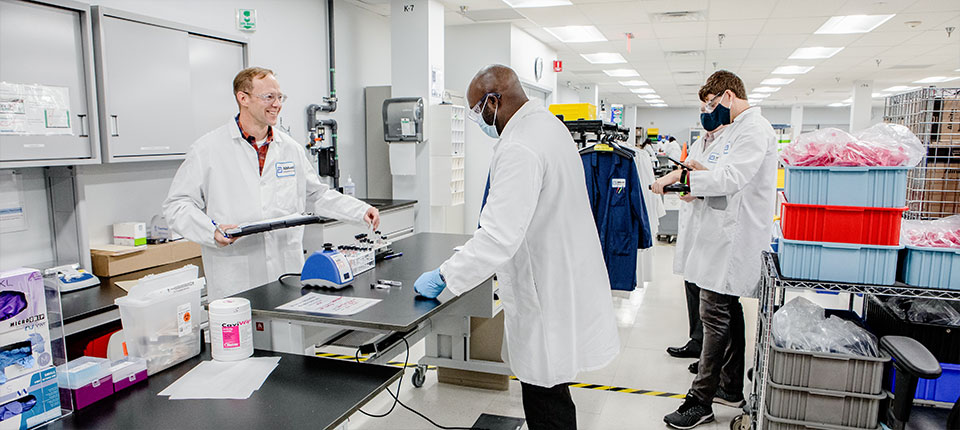Jan. 19, 2022

Unique STEM Job Focuses on How People Use Products
Human factor engineers design products to fit the needs of people
- Copy Link
- Share on X
- Share on Facebook
- Share on Linkedin
You’ve likely heard of many of the more traditional engineering disciplines like civil, chemical, electrical, industrial or mechanical engineering.
But there’s one relatively unknown engineering genre that’s essential to nearly everything engineers design or produce. It’s called human factors engineering.
John-Paul Stephens is a principal human factors engineer at Abbott who works with the Core Diagnostics division. Stephens and his team spend much of their time working to discover and correct potential issues before a medical device or its components reach regulatory review or market.
How it began
Human factors engineering applies characteristics of people — whether physical limitations like strength or range of motion, or sensory, emotional or behavioral tendencies — to influence product design, Stephens said.
World War II aviation inspired modern-day human factors engineering. Pilots, who often flew multiple types of planes, encountered controls such as knobs and switches in different spots in the cockpit or that looked unfamiliar. This often led to use errors for the pilots. To solve for this, several key instruments and controls became more standardized or were adapted to be identified by feel or position, reducing crashes, he said.
“We try to design a tool to fit the human characteristics,” said Stephens, who studied industrial engineering at Texas A&M University. He graduated with a doctorate in human factors engineering and ergonomics.
“We don't try and mash the human into a tool that we've designed,” he said. “It's about educating the design engineers about those human capabilities and limitations to help them design a better product.”
When people first interact with a device or system, they create an idea of how it should work, whether they're right or wrong, Stephens said.
“Everybody's mental models are slightly different and can change with new experiences or differ across cultures,” Stephens said, giving the example of the placement of hot and cold-water faucets in the U.S. and Mexico. Hot water is on the left in the U.S. and often on the right in Mexico.
Applications at Abbott
In medical product design, the human factors team is always working to improve safety by helping engineers reduce “use errors,” which are people’s actions or lack of actions while using a medical device that led to different results than the manufacturer intended or the user expected, he said.
“One of our primary roles is to help design engineers bridge the gap between their vision of the product and how the end user will ultimately use it,” Stephens said. “This puzzle is a really big part of the appeal of this job. That, and knowing that our work reduces the likelihood of a use error in the field, which would have negative consequences to the patient.”
Most human factor engineers at Abbott have degrees in industrial or mechanical engineering with a concentration or certification in human factors or ergonomics, he said. Human factor engineers’ technical backgrounds also often include anthropometry, biomechanics, statistics and cognitive psychology.
High expectations
Stephens said the FDA ranks human factors and cybersecurity as two important areas for medical device companies because medical errors or accidents are a leading cause of accidental deaths and result in billions of dollars in medical costs.
Whether employees have formal education in human factors or are learning on the job, Abbott invests in training them.
“We do extensive training in anthropometry, which is the study of human measurements,” Stephens said. “We can provide height ranges to the designers so they can design a product that works for a woman who falls in the fifth percentile of height or a man who’s in the 95th percentile.”
In addition to knowing Abbott products are safe and practical for customers to use, the focus on human factors improves satisfaction.
“This last element is very important for our more-customer facing businesses like diabetes and nutrition, where the product is directly purchased,” Stephens said. “For our commercial products, it’s not only important that our products are safe for our customers to use, but that they are products our customers enjoy using.”
For the latest on Abbott’s life-changing technology, get updates directly in your inbox.